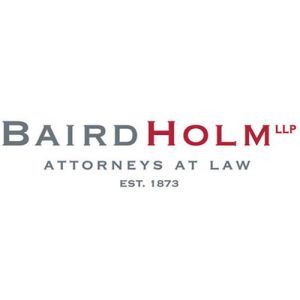Section 1361 of the Internal Revenue Code1 sets forth the requirements for an entity electing to be taxed under Subchapter S as an S corporation. S corporations continue to be a popular choice due to the potential savings on self-employment taxes resulting from the bifurcation of payments made to the owners into wages versus distributions, subject to certain requirements.
There are many restrictions on the structure of an S corporation. The most commonly cited restriction relates to the prohibition of the following types of owners:
- a person whose ownership thereof would cause the company to have more than 100 shareholders;
- an individual who is not a United States citizen or resident;
- a trust (or the trustee thereof) which fails to satisfy the requirements of Sections 1361(c)(2)(A) or 1361(d) of the Code; or
- a corporation.
Another defining restriction of an S corporation is the limitations on classes of stock. Taxpayers and practitioners forming an S corporation, or adjusting the governing documents to the same, must take care to avoid violation of this limitation. With that said, taxpayers and practitioners may have more flexibility than they think.
One Class of Stock Requirement
Section 1361(b)(1)(D) defines an S corporation as a small business corporation that, among other characteristics, does not have more than one class of stock (commonly referred to as the “one class of stock requirement”). For purposes of the one class of stock requirement, all outstanding shares of stock must confer identical rights to distribution and liquidation proceeds.2 Treasury regulations provide that the determination of such rights can be ascertained by reviewing a corporation’s “governing provisions,” such as a corporate charter, articles of incorporation, bylaws, applicable state law, and binding agreements relating to distribution and liquidation proceeds.3
If an S corporation fails the one class of stock requirement, its S status inadvertently terminates and the corporation will be treated as a C corporation.4 While an inadvertent termination is a worrisome prospect, tax practitioners are sometimes overcautious in thinking that a single disproportionate distribution (or even a repeated pattern of such distributions) will result in a tax election nightmare. Luckily for taxpayers, the rules are more forgiving, as illustrated in the recent Maggard v. Commissioner case.
Maggard v. Commissioner
In August 2024, the United States Tax Court held in the case of Maggard v. Commissioner that as long as the governing provisions of a corporation provide for identical rights, disproportionate distributions will not violate the one class of stock requirement.5
James Maggard founded Schricker Engineering Group with Todd Schricker. The corporation elected to be treated as an S corporation in 2002 and its governing documents provided for proportionate distributions. Todd Schricker eventually sold his shares in the corporation and two new shareholders joined Maggard in the business. Unfortunately, these new shareholders began misappropriating funds and siphoning off Maggard’s earnings for themselves, resulting in disproportionate distributions. Further, the pair failed to provide K-1s in time for Maggard to accurately file his taxes.
While Maggard never received distributions from the corporation, the IRS determined on audit that, due to the corporation’s governing documents, Maggard still owed tax on his pro rata share of income. Maggard contended that the disproportionate distributions resulted in a termination of the company’s S status, and thus, he owed no tax on the undistributed income because the entity had reverted to a C corporation upon such termination. The Commissioner argued that the court should not make its determination based on what the shareholders do, but instead on the rights conferred by the governing provisions. The court agreed with the Commissioner, reasoning that the disproportionate distributions in this instance were not “memorialized” by the distributing shareholders or by formal amendments to the company’s governing documents, and thus, there was “no formal change.” The court stayed clear of focusing on the actions of the shareholders, i.e., the numerous disproportionate distributions in conflict with the governing documents.
Despite the emphasis on a corporation’s governing documents in the Maggard case, it is important to note that the court has previously suggested that a disproportionate distribution could still trigger a second class of stock if there is evidence of “formal corporate action sufficient to bind the company in a manner that affect[s] distribution and liquidation rights of the S-Corp.”6 Thus, if there had been evidence that the company was bound to such distributions, the court may have reached the opposite conclusion.
In summary, taxpayers with S corporations, and tax practitioners advising on the same, should review governing documents carefully to confirm that the provisions do not confer non-identical rights. Practitioners can hopefully rest a little easier knowing that a single distribution (or even an egregious number like in the case of Maggard) will not necessarily terminate a company’s S election, provided the governing provisions are properly constructed. In all cases, care should be taken in setting up, revising ownership of, or otherwise dealing with S corporations to avoid an inadvertent termination.


Hannah Fischer Frey is a partner at Baird Holm LLP, focusing on corporate transactions, federal and state tax planning issues, and tax-exempt matters. Fischer Frey has addressed complex partnership and corporate tax issues, including business reorganizations, private equity fund structuring, business succession planning, and tax planning in mergers and acquisitions. She has been closely involved in numerous federal and state tax examinations and audits. Carrie Schwab is an associate at the law firm, focusing on general corporate matters as well as tax law and employee compensation and benefits. She assists businesses of all sizes on a variety of matters, including entity formation, corporate governance, general tax strategy and planning, ERISA compliance and employee benefit programs, and equity compensation incentives. For more information, call (402) 344-0500 or email hfrey@bairdholm.com or cschwab@bairdholm.com.
- 26 U.S.C. § 1361(b)(1)(D). All sections reference the Internal Revenue Code of 1986, as amended, unless otherwise noted.
- Treas. Reg. § 1.1361-1(l)(1).
- Treas. Reg. § 1.1361-1(l)(2).
- § 1361(b)(3)(c).
- Maggard v. Commissioner, T.C. Memo 2024-77, *9 (U.S. Tax Ct. Aug. 7 2024).
- Minton v. C.I.R, 562 F.3d 730, 733 (5th Cir. 2009).









